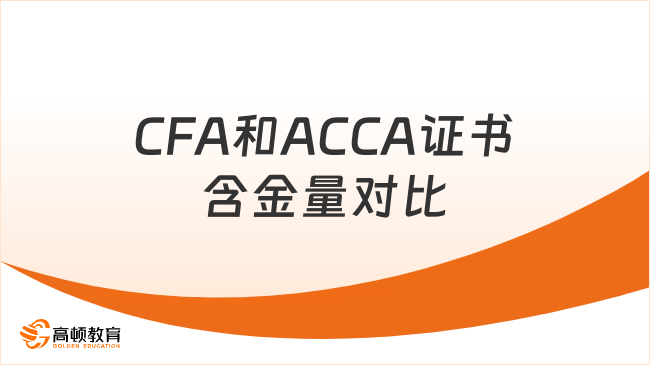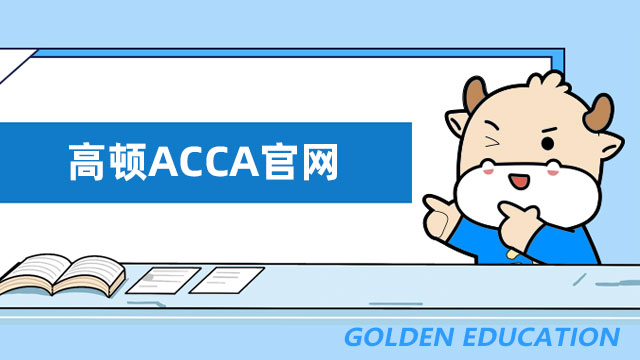ACCA考试:f1-2011年6月考官点评文章
Examiner’s report
F1 Accounting in Business
June 2011
General Comments
Thecandidates were generally well prepared and most questions had passrates in excess of 50%. Only seven questions had pass rate lower thanthis.
The areas on which candidates performedexceptionally well included Macgregor’s Theory X and Y, roles within theaccounting department, computerised v. manual systems and remunerationsystems.
Questions with lower pass rates includedthose on the differences between a team and a group, SWOT analysis, PEST(environmental) factors, Kolb’s theory of learning, non-executivedirectors, team briefing, and the role of external auditors in reducingthe risks of fraud. It was surprising that candidates performedrelatively poorly on SWOT and PEST analyses, as such questions hadcaused less difficulty in the past. Likewise, only just over half thecandidates selected the correct answers for questions on IFAC and theACCA Code of Ethics.
Candidates continued to dowell on questions relating to the accounting function, which has been acommon observation since inception of the paper. There was a goodawareness of the role of internal auditors, the role of externalauditors, the purposes of an aged receivables listing and the roles ofthe managers of specific areas of accounting within a company’s financedepartment. This did not apply across the whole paper, however, as over40% of candidates chose incorrect answers for questions on the role ofan audit committee, management of working capital and recordingtransactions.
It was encouraging to note thatthere seems no longer to be major problems with questions on humanresources management or management theories in general. In particular,the pass rates on questions relating to Tuckman’s theory of teamdevelopment, the separation of management and ownership, certain aspectsof corporate governance and organisational culture were verysatisfactory.
Both economics and marketing featured lessprominently on this paper than in previous examination sessions, but thepass rates on these questions were reasonable.
Marginalcandidates may have compromised their results by failing to answer therequired number of questions. Even if the candidate has little grasp of atopic, it is worth making some attempt at the question when there is a25%, 33% or 50% probability of getting the question right.
Candidatesperformed quite well on scenario questions, suggesting that even ifthese take longer to answer, they are no more difficult than brieferquestions, if considered carefully.
Of the 10single mark questions on the paper, only two of these saw very high passrates, which seems to indicate that candidates do not find them easierthan two mark questions.
Sample Questions for Discussion
Question 2 required an understanding of how the characteristics of a team differ from those of a group.
Which of the following is a characteristic of a team but not of a group?
A The sense of identity brought about by common objectives
B The bonding and loyalty of the members to one another
C The emergence of one particular individual as a leader
D The organisation of work through strictly formal processes
This topic is covered quite well in approved teaching materials, but only 34% of candidates selected the correct answer.
The correct answer is D.
Asense of identity can be brought about by common objectives in both ateam and a group. Likewise, bonding and loyalty can apply to both.Distractor C is more tricky, in that a working team usually has anappointed leader, but it is not impossible for leaders to emerge,especially when working groups are loosely configurated.
Example 2:
Question28 required knowledge of Kolb’s theory of learning. This is one of twotheories that candidates need to learn, the other being that of Honeyand Mumford.
Kolb’s learning cycle comprises active experimentation, experience, observation and reflection, and which other element?
A Assimilation
B Application
C Abstract conceptualisation
D Positive reinforcement
The correct answer is C. Only 34% of candidates selected the correct answer.
Thequestion is a good example of the necessity to remember stages of thevarious models encountered in the course of study for paper F1. To someextent, tackling this type of question is dependent on a good memory, asit is quite clearly impossible to remember every stage of every modelstudied for the paper. The best way to deal with such theoretical modelsis to look at their practical significance by using real examples todemonstrate how to apply them.
Example 3:
Question 38 required an knowledgeof the PEST (or PESTEL) factors that must be considered by thoseresponsible for strategic planning in an organisation.
Eatkleenis a pressure group that seeks to encourage food producers to eliminateharmful preservatives from food and make the public aware of thepotential dangers of these additives. Frustrated with the government’sexplicit policy not to act on this in the near future, Eatkleen iscampaigning for consumers to boycott certain products.
What combination of environmental factors is Eatkleen bringing to bear on food producers?
A Political and social
B Social and economic
C Political and technological
D Economic and technological
The correct answer is B, which was selected by 38% of candidates.
Makingthe public more aware of the potential dangers of additives is anattempt to affect social trends. A boycott of certain products, ifeffective, will lead to lower sales revenues and therefore lowerprofits, bringing pressure to bear on the companies concerned. This isclearly an economic influence.
Distractors C and D should havebeen ruled out quite quickly, as there was nothing in the question tosuggest that technological factors were relevant.
Conclusions:
Theperformance in June 2011 continues the trend suggesting that candidateshave been taking an appropriately broad approach to their studies. Noneof the individual sections of the syllabus caused significantly greaterdifficulty than others, though perhaps understandably there are higherpass rates on questions directly relating to accounting and finance.
Theoriesapplicable to ‘softer’ management and human resources topics are oftenmore difficult to grasp, but this reflects in pass rates for onlycertain questions. Generally, theories that are more easily remembereddue to the words used (for example, Tuckman’s theory includes forming,storming, performing and so on) are more straightforward, and candidatescan remember the words used, the order in which they appear in thetheory, and apply them to scenarios. By contrast, the theories ofwriters such as Belbin and Kolb often present greater difficulty, theformer because there are nine typologies to remember and the latterbecause the terminology is difficult. This suggests that perhaps alittle more time should be spent on these in order to make the conceptsclearer.
Scenario questions take longer becausethere are more words to read, and it is sometimes necessary to read thescenario several times in order to understand the issues involved. Asmentioned above, however, these questions seem not to prove any moredifficult to candidates, demonstrating that most candidates are readingthem thoroughly before selecting their answers. By contrast, some singlemark questions have lower pass rates that expected, and this may bebecause candidates afford them too little time. It should be noted thatthe F1 syllabus has been amended and is a shared syllabus with FAB aspart of the Foundations in Accounting suite of papers with effect fromDecember 2011. The structure of the paper has also changed slightly assingle marks questions will not appear on at least the next two papers.
Thisexamination session produced some surprises, in that this was the firstexamination in which questions on environmental factors and SWOTanalysis created any significant difficulties for some candidates. It istherefore important to assume that these subjects will not always yield‘easy’ marks.
There was no evidence that the examination was time pressured.
【整理版】ACCA各科目历年真题
真题高频考点,刷题全靠这份资料
acca全科学习思维导图
梳理核心考点,一图看懂全部章节
2023年acca考纲解析
覆盖科目重难点,备考按照计划走
- acca考试怎么搭配科目?
-
建议优先选择相关联的科目进行搭配报考,这样可以提高备考效率,减轻备考压力,1、F1-F4:为随时机考科目,难度较低,这里可以自行随意选择考试顺序。2、F5-F9:如果你的工作的和财务会计或者审计有关、或者你比较擅长财务和审计的话,推荐先考F7和F8。你可以选择一起考ACCA考试科目F7和F8或者先考F7(8)再考F8(7),这就要取决你一次想考几门。3、P阶段:选修科目中,建议企业首选AFM!第二部分科目进行选择,如果AA和SBR掌握学生更好,可以通过选择AAA,如果SBL掌握的好,可以自己选择APM。
- acca一共几门几年考完?
-
acca一共有15门考试科目,其中有必修科目和选修科目,考生需要考完13门科目才能拿下证书。
- acca一年考几次?
-
acca一年有4次考试,分别是3月、6月、9月和12月,分季机考科目是采取的这类四个考季的模式,而随时机考则是没有这方面的时间规定限制,可以随报随考。
- acca的含金量如何?
-
ACCA证书的含金量是比较高的,从就业、能力提升、全球认可等角度来说,都是比较有优势的证书,其含金量主要表现在以下几个方面:1、国际化,认可度高;2、岗位多,就业前景好;3、缺口大,人才激励。
-
ACCA机考中心考点地址 2023-10-30
-
CFA和ACCA证书含金量对比 2023-09-16
-
今年最透彻的ACCA考试科目解析 2023-09-16
-
CIMA和ACCA有什么区别?两者选哪个好? 2023-09-05
-
ACCA可以免考几门? 2023-09-01
-
ACCA报考条件!大学生能报考ACCA吗?在职人士也能报考ACCA吗? 2023-08-29
-
高顿网校ACCA论坛地址 2023-07-25
-
ACCA报名详细指南:点击了解ACCA考试的费用和流程! 2023-06-16
-
上海对外经贸大学会计专业如何?有没有ACCA免考? 2023-06-13
-
山东财经大学会计专业好不好?能考ACCA吗? 2023-06-13
-
宁波诺丁汉大学会计专业真实评价,有没有ACCA课程? 2023-06-13
-
安徽财经大学会计专业值得报吗?有ACCA方向班吗? 2023-06-13
-
2023年acca注册需要哪些材料?点击查看全套材料清单! 2023-05-11
-
2023年ACCA报考指南详细篇,从流程到费用全解! 2023-05-11
-
ACCA、CPA、CAT、IFA四大会计证书的含金量解析 2023-05-09
-
ACCA、CPA、CAT、IFA四大会计证书的含金量解析 2023-05-09
-
acca报名条件是什么?看看你符不符合要求! 2023-04-27
-
高顿ACCA官网 2023-03-31
-
不交ACCA年费会有什么后果? 2023-03-29
-
acca官网怎么找历年真题?详细步骤一览! 2023-03-10
-
长沙理工大学acca怎么样?好就业吗? 2023-02-23
-
acca考试考点2023年在哪些地方?报考前必看! 2023-02-23
-
CPA考试平均备考时间4年以上,然鹅ACCA却只用... 2023-01-04
-
2023年ACCA考试报名条件 2022-12-19
-
ACCA考试科目详细介绍 2022-12-19
-
acca考试介绍,报考2023年考试必看! 2022-12-06
-
英国国际注册会计师简介,附新手报考指南! 2022-11-23
-
ACCA官网登陆 2022-11-15
-
国际注册会计师acca证书详解,一文给你介绍清楚! 2022-11-11
-
12月ACCA考试报名入口及流程,速看! 2022-11-01
 更多服务
更多服务






































